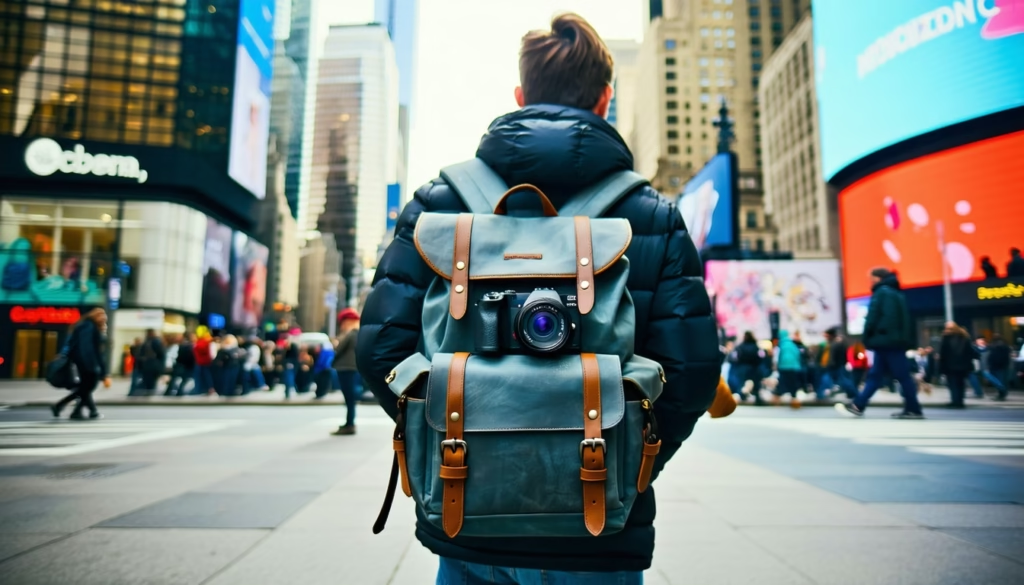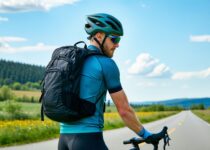How To Use Camera Backpacks For Urban Photography

Picture this: you’re weaving through a crowded sidewalk as a burst of golden hour light bounces off a glass building. Urban photography demands you stay nimble, alert, and ready to capture that perfect frame. In this guide, you’ll learn how to use camera backpacks for urban photography to keep your gear protected, organized, and within reach. You’ll find tips on choosing the right bag, packing smartly, accessing equipment on the move, and maintaining your pack for long days shooting the city.
Choose Essential Camera Gear
Your backpack only delivers if it holds the right tools. Start by gathering gear that matches your shooting style and the urban environment.
- Camera Body and Lenses
• A versatile zoom (24–70mm) and a fast prime (35mm or 50mm) cover most city scenes
• Consider a compact mirrorless kit if you want to travel light - Power and Storage
• Extra batteries and a charger
• Memory cards stored in a protective case - Support and Stability
• A travel-size tripod or a monopod
• Look into how to carry a tripod using a camera backpack for hands-free mobility - Protection and Cleaning
• Lens cloth and blower brush
• Rain cover or waterproof pouch for sudden downpours
Before you shop, review essential features every photographer should want in a backpack. Focus on adjustable dividers, quick-access panels, and weather resistance so you stay prepared for any urban shoot.
Pack Gear Strategically
A well-packed bag saves time and stress when the perfect shot appears. Let’s be honest, rummaging inside a cluttered pack kills momentum.
- Lay Out Everything
Spread gear on a table. Visualize how you’ll reach for each item. - Use Modular Dividers
Adjust compartments to fit your lenses snugly. This prevents shifting when you race across the street. - Prioritize Priority Items
Keep your main camera and favorite lens in the top or side pocket for fast access. - Avoid Overpacking
Only bring what you’ll actually use. Less weight lets you move quickly. - Secure Valuables
Place wallet, phone, and keys in a zipped interior pocket to avoid pickpockets in busy areas.
By packing with purpose, you’ll cut down on setup time, maintain balance, and prevent gear from banging around during your city explorations.
Protect Your Equipment
City streets can be unpredictable. Protecting your camera gear means guarding against bumps, rain, and theft.
- Padded Compartments
Ensure each lens and body has its own cushioned slot. - Rain and Dust Covers
Keep a compact cover handy. - Memory Card Safety
Store cards in a hard case away from magnets and moisture. - Anti-Theft Measures
Opt for lockable zippers or secret pockets to deter snatch-and-grab opportunists. - Gear Insurance
If you shoot professionally, consider insurance for stolen or damaged equipment.
For DSLR shooters, check out how to protect your dslr gear in a backpack for extra pointers on padding and positioning.
Access Gear Quickly
Urban moments unfold fast. Your backpack should let you transition from shoulder to shot in seconds.
- Side-Door Panels
Bags with side access let you grab a lens or battery without taking the pack off. - Top-Loading Sections
Ideal for reaching your primary camera body in a flash. - Quick-Release Straps
Look for adjustable straps that let you swing the bag to your front and grab gear. - Organized Pockets
Dedicate specific pockets to filters, cables, and personal items so you never dig around. - Layout Planning
Review the best camera backpack layouts for fast access to optimize your arrangement.
A smooth gear switch can mean the difference between a blurred shot and a winning street photography frame.
Carry a Backpack Comfortably
Long urban shoots can strain your shoulders and back. Comfort keeps you shooting longer.
- Balanced Load
Distribute weight evenly between camera gear and personal items. - Padded Straps and Back Panel
Look for breathable mesh and ergonomic curves. - Chest and Waist Straps
These stabilize the load when you climb stairs or weave through crowds. - Adjustable Fit
Tailor the straps so the pack sits snugly against your torso, minimizing sway. - Pack Light
Revisit your kit and ditch any extras you haven’t used lately.
If you find yourself tired by midday, small tweaks—like tightening a waist belt—can make a big difference in carrying comfort.
Navigate Urban Environments
Cityscapes test your mobility, situational awareness, and gear security.
- Crowded Areas
Keep the backpack in front when packed tightly. - Street Photography Style
Sling the bag over one shoulder so your camera is at ready height. - Public Transit
Check for compact designs that fit under seats or in overhead racks. - Quick Escapes
Avoid overly complex locks or straps when you need to move fast. - Urban Terrain
Test the bag on uneven sidewalks and bike paths to ensure durability.
Mastering city logistics means you spend more time shooting and less time worrying about bags and bystanders.
Maintain Your Camera Backpack
A clean, functional pack protects your gear for years of urban adventures.
- Empty and Inspect
After each shoot, remove all items and check for debris, moisture, or damage. - Spot-Clean Fabric
Use a damp cloth and mild soap to remove dirt or spills. - Lubricate Zippers
A tiny drop of silicone keeps zippers gliding smoothly. - Store Dry
Air out the bag completely before storing it in a cool, dry place. - Replace Worn Parts
Swapping out frayed straps or padding extends the life of your pack.
Routine care means you’ll avoid surprises—like a broken seam right before a sunrise shoot—allowing you to focus on framing the perfect shot.
Frequently Asked Questions
What’s the Best Size Backpack for Urban Photography?
Aim for a bag that holds one body, two to three lenses, and a small tripod without being bulky. Look for a compact design under 20 liters.
How Do I Keep Lenses Scratch-Free Inside My Pack?
Use padded, individual compartments and soft lens pouches. Slide lenses in with the glass facing away from dividers. For more ideas check out tips for keeping lenses scratch-free inside a backpack.
Can I Carry a Drone and Camera Together?
Yes, but plan your layout carefully. Follow tips for packing a drone and camera together safely to prevent propellers or batteries from damaging your camera kit.
How Do I Travel by Plane With a Camera Backpack?
Select a TSA-friendly pack with a laptop compartment and quick-access panels. Pack gear in carry-on and secure valuable items in your personal bag.
What’s the Difference Between Hiking and Camera Backpacks?
Camera packs focus on gear protection and quick access, while hiking bags prioritize ventilation and load distribution. Compare features in the difference between hiking and camera backpacks.
How Can I Prevent Back Pain When Carrying Heavy Gear?
Balance your load front to back, use waist straps, and take regular breaks. Read how to prevent back pain when carrying camera gear for detailed advice.
Final Tips for Urban Photography
Urban photography is all about staying light on your feet and quick with your gear. By choosing the right backpack, packing with purpose, and mastering on-the-go access, you’ll be ready for every fleeting moment the city throws at you. With regular maintenance and an eye on comfort, your camera backpack becomes an extension of your workflow, not a burden. Embark on your next urban shoot with confidence, and watch your street photography skills soar.


